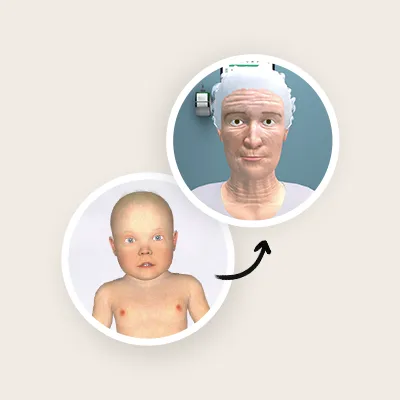On the 5th edition of the SIGMA European Conference, Body Interact promoted a webinar with 4 international nursing educators where they were invited to share their opinion and experience within the use of virtual patients.
After a brief introduction about Body Interact, Take the Wind* CEO Pedro Pinto has challenged the audience with some questions. Participants were invited to look for the answers throughout the speakers’ presentation.
How can we…
Address a new didactic, a more digital one?
Engage with students?
Take advantage of the new technologies?
Make the learning more emotional?
*Take the Wind is the company who created Body Interact, the virtual patient simulator.

Pause! It’s time to discuss clinical decisions in a controlled learning environment
Lorraine Betts, our first speaker, has been using Body Interact since 2016. Lorraine teaches at the Sally Horsfall Eaton School of Nursing at George Brown College, in Canada.
Previously to this pandemic, Lorraine used to divide her classes in groups of six. The students would gather around the Body Interact table and would be assigned with a different task. Depending on their level of knowledge, she would choose a number and the level of difficulty of the clinical scenarios.
The remaining students would be sited at the back, paying attention to their colleagues’ performance and decisions. By projecting the screen on the wall, Lorraine would get all the students engaged, working and interacting.

To understand how students would engage with the simulator, before introducing it in the university’s curriculum, the George Brown College developed a research study. It was found that “it was very easy to use. It was very realistic. Actually, they felt like they could visualize things better”, explained the nursing educator.
Also, in comparison with other simulators, students mentioned it was an essential component to their learning.
By starting their learning development, with Body Interact, they would be able to train their clinical reasoning until they master it, and then invest their time on training the clinical procedures in a human patient simulator. From soft to hard skills development, students felt more confidence when they approach real patients in the real clinical environment.

Body Interact as an effective learning tool
Four years after the first research study, Lorraine and her team are participating in the Body Interact global study. Regarding their school, we can already conclude that:
- The virtual patient simulator helps learners’ individual learning process of organizing their reasoning, theoretical perception and discussing clinical decisions in a controlled learning environment; and
- It helps learners identify their learning gaps, practice decision-making strategies and learn from their clinical decision-making errors in a positive manner.
Still under development, the global study already includes 9 healthcare teaching institutions from 6 different countries. On the second stage more students and educators are embracing the study.
As the research promoters, Body Interact team will share the general conclusions later on this year and extracting the specific ones for each university who participated.
Interested to know more about our research study? Stay tuned.
Body Interact – SIGMA – Part 1
Take the change to read
Body Interact – SIGMA conference – Part 2 with Leila Sales, coordinator of the Nursing degree course at the Portuguese Red Cross Higher School
Did you like this article? Take the chance to share it…
Co-financed by:









